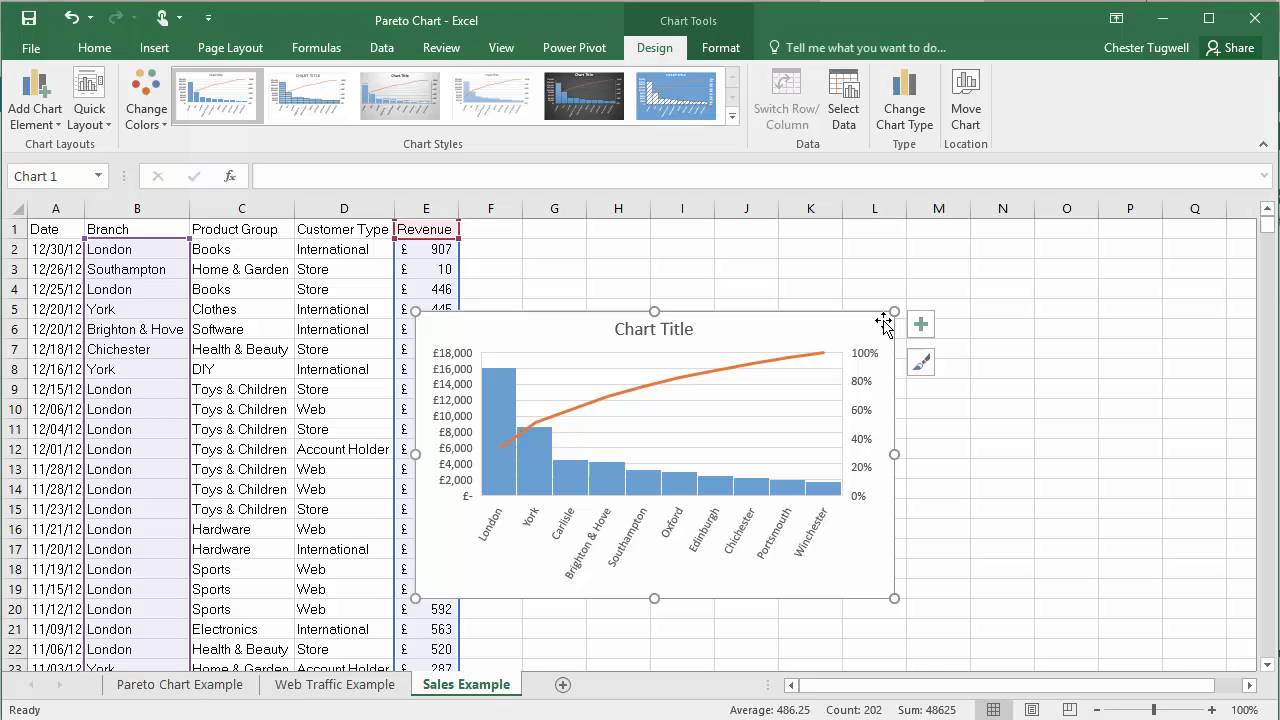

The categories in the "tail" of the chart used to be called the "trival many" or the insignificant factors. If you have a single factor causing 50% of the problems, but it would cost you a million dollars to fix, and there are 3 other factors causing a total of 30% of the problems that would be much less expensive to fix, perhaps solving the 3 other factors first would be more beneficial. 80% of the problems come from 20% of the causes)Ī pareto chart can help you quickly identify the most significant factors, but choosing which problems to fix may still require a cost-benefit analysis.

Although the actual numbers may be different from case-to-case, the Pareto Principle is a guiding principle used in business for. Juran, a 20th century evangelist for quality management, applied this principal to quality control and preferred the use of the phrase "the vital few and the useful many" to describe the 80-20 rule. Vilfredo Pareto originally observed that in Italy, 80% of the land was owned by 20% of the people. Now that we have the report ready, it would be nice to behave like a civilized analyst and create a dynamic chart 😀ĭon’t get too bedazzled by this.The Pareto Principle, or 80-20 Rule, is a general rule-of-thumb or guideline that says that 80% of the effects stem from 20% of the causes. Learn everything about Slicer formatting (how to make them look sexy).A Slicer (filter) gets added in the sheet and clicking on any of the region will filter the report by the specific region selected.Right Click on Region in the Pivot Field List.Now it’ll be pretty cool if I can do the Pareto analysis and split the sales contribution by region too! What this is showing you is that – how Sales are totaling up to a 100% and now you can easily find out which customers contributed 80% of the total sales In show values as pick Running totals in % and apply that calculation on the Customer field.Right Click on Sum of Sales (2) in the Pivot Table and go to Value Field Settings.Sum of Sales will appear again in the Pivot Add the Sales in the values once again.And sort the Sales in the Pivot Table in the descending order.top 20% customers in East, West, North or South and Overall)ģ Quick Steps after you create a Pivot Table In my option these days the numbers are getting more and more skewed, for eg 2% of customer that contributed to 95% of salesĪnyways let’s see how can this be solved in Excel and just to make things more interesting, I would like to also filter the Customers by Regions as well (i.e. Note that in most cases you wouldn’t find the numbers to be exactly 20% or 80% but this has been theoretically correct. Let’s take an example of how would you perform 80-20 ( a.k.a Pareto) analysis in ExcelĨ0-20 Analysis : What if as a manager I would like to see the top (20%) customers that contribute (80%) of the Sales. You’ll find a ton of real life (business) examples which abide by the 80-20 Rule. In less than 20% of my day’s time, I burnt all the junk that I ate throughout the day. How ? I walked for an hour in a scorching summer evening holding my notorious Son (often found dancing on my head)

and the lunch was separate 😀īut I burnt this all. Blueberry Jam Cake, Salted Lentils, Stuffed Pranthas, Beer, Chicken, Ice-Cream, oh yes.

Yesterday was Sunday (23 Apr) and I binged like a mad man.


 0 kommentar(er)
0 kommentar(er)
